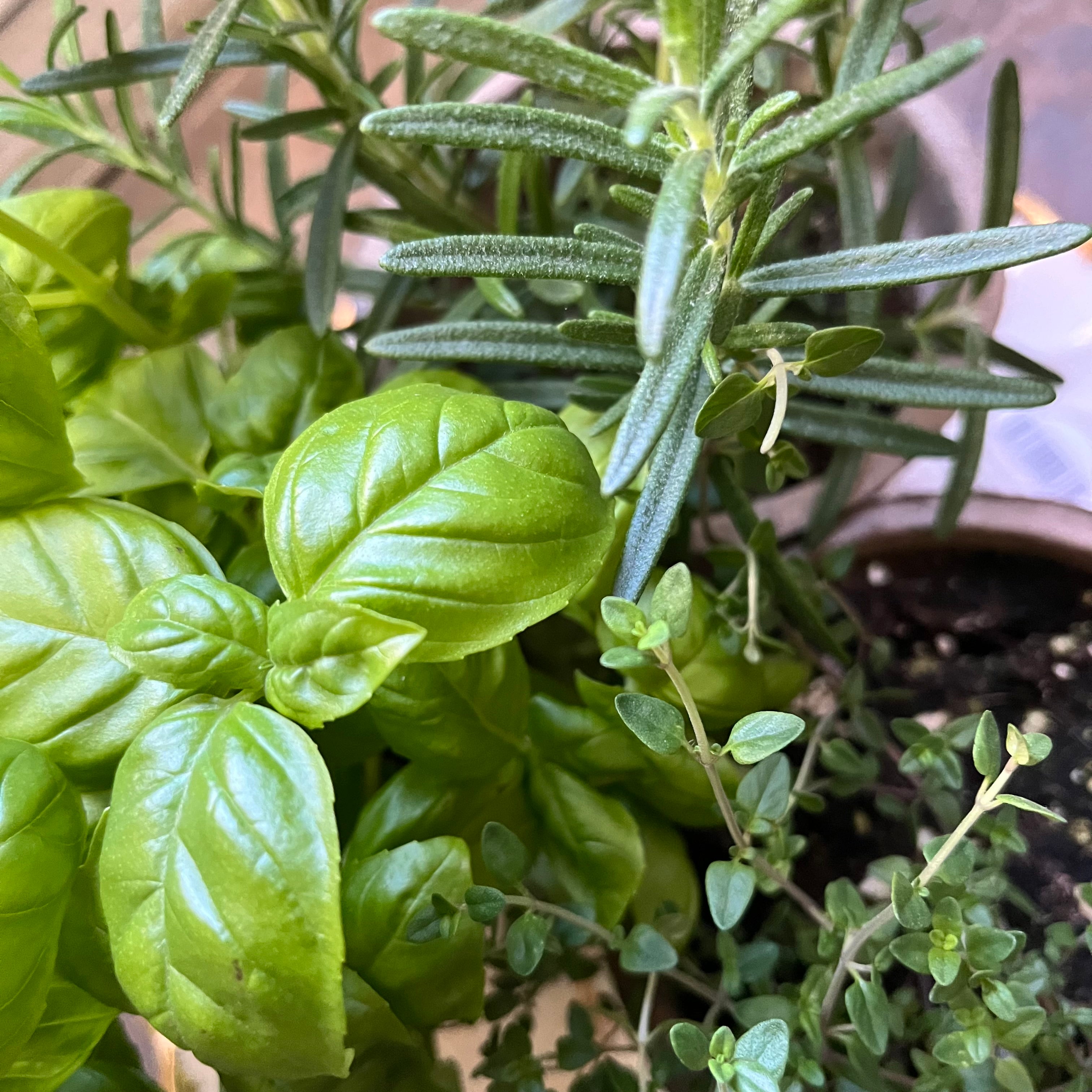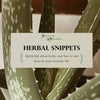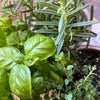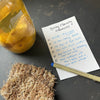Introduction to Herbalism: Rosemary, Thyme & Basil

Rosemary, Thyme, and Basil



Rosemary, Thyme and Basil are members of the Mint Family, Lamiaceae. This large family has over 230 Genera, and over 7,000 Species. They are commonly found, easy to grow, useful to most people, and have few contraindications.
Good food is good medicine, and herbs make food taste great! But herbs do more than just flavor your favorite dish: herbs can be used for healing too. Whether you are sitting with plants in a garden, running your hands over fresh herbs and just inhaling their beautiful aroma… or crafting a medicinal tea to help fight off a nasty cold: herbs are your friends and are a valuable ally to your health and peace of mind.
Herbalism is the study of plants and their medicinal/healing properties. There is so much to learn, and you will spend the rest of your life learning (and still feel like you still don’t know enough!). So don’t overwhelm yourself: take one bite at a time and give yourself time to chew. Let’s start with a few basic concepts of herbalism to help you understand, observe, and use herbs every day.
Herbal Energetics
Herbal Energetics: Observations that we make about herbs using our Senses (taste, smell, etc)
-
Effect on Energy
- Warming – increase energy and metabolism, increase blood flow; increase Qi
- Cooling – slow energy and metabolism, soothe irritation and redness; reduce Yang
- Neutral – do not have a strong effect on circulation or metabolism
-
Effect on Tissue Density
- Moistening – increase moisture content in tissues, lubricate and soften
- Drying – removes excess fluids from tissues, firms, relieves dampness & swelling
- Balancing – normalize tissues, balance moisture and solids (minerals) in tissues
- Effect on Muscle
- Constricting - increase tone and tension to stop excess flow and secretion; tone
- Relaxing – relax spasms, relieve tension to promote flow
- Nourishing – provides essential nutrients to improve structure and function
Twelve Categories of Herbs
- Pungent – spicy and hot; warming and drying; upward and outward movement
- Aromatic – volatile oils; warming and drying; affect nervous system
- Alkaloidal Bitters – bitter; alkaloids (-ine); cooling and drying; nervous and glandular systems
- Non-Alkaloidal Bitters – bitter; diterpenes and glycosides; cooling and drying; stimulate bile
- Fragrant Bitters– warming and drying; sesquiterpene lactones & triterpenes; expel parasites
- Acrid – bitter, nasty, burning taste; resins and alkaloids; relaxing and cooling; antispasmodic
- Astringent – slightly bitter taste due to tannins; drying and constricting; toning
- Sour – flavonoids; cooling, balancing and nourishing; reduce inflammation
- Salty – subtle salty or grassy taste; mineral salts; balancing and nourishing
- Sweet – subtle sweet taste; polysaccharides or saponins; moistening and neutral
- Mucilant – mucilaginous; slippery texture; polysaccharides; moistening, cooling, nourishing
- Oily – Oily taste & texture; fatty acids; nourishing and cooling
Properties or Actions of Herbs
- There are about (90) terms in this category, such as Adaptogens, Carminatives, and Expectorants
- Overall purpose of categories is to help us understand and recognize patterns, not just memorizing.
Let's tie some of these concepts together in a few familiar herbs...
ROSEMARY
Herb of Remembrance
Description: Aromatic, hardy evergreen perennial with short needle-shaped leaves and small flowers, ranging in color from white, pink to pale blue. The name Rosmarinus signifies ‘sea-dew’ or ‘dew of the sea’, which is where Rosemary thrives best, in moist air and dry soils.
Native to: Mediterranean and Asia
Taxonomy:
- Family: Lamiaceae
- Latin name: Formerly known as Rosmarinus officinalis. The genus Rosmarinus was merged into the genus Salvia in a 2017 phylogenetic analysis. The new scientific name of Rosemary is Salvia rosmarinus
Energetics: Warming, Drying, and Astringent
Compounds & Chemistry:
- Phytochemicals (chemical compounds produced by plants): Rosmarinic acid, Camphor, Caffeic Acid, Ursolic Acid, Betulinic Acid, Carnosic Acid, and Carnosol.
- Very high in B-complex vitamins, including high levels of Folates, Vitamin A, C, Potassium, Calcium, Iron, Manganese, Copper, Magnesium
- Volatile oils, including: Camphene, Cineol, Borneol, and Bornyl acetate, Diterpenes
Properties: Antidepressant, antioxidant, antirheumatic, antiseptic, carminative, cerebral tonic, expectorant, antimicrobial. Stimulates the central nervous system and circulation.
Traditional Chinese medicine (TCM): Known as Mi Die Xiang. Used to treat wind-damp-cold, resolve phlegm, builds Qi (vital force) and tonify Yang (warmth and energy). It enters through the lungs, Spleen, Kidney, Heart and Liver. Promotes blood flow, promotes healing, improves memory and mental clarity.
History:
- Ancient Greek students wore rosemary garlands on their heads to stimulate their minds.
- Rosemary was considered very valuable during the Great Plague in Europe (mid-1600s): it was burned in sick chambers in hospitals to purify the air.
- Used in many ceremonies to help those remember loved ones.
Everyday Ways to Use Rosemary:
- Cooking: bitter, astringent, aromatic, roasting yields a slight mustard-like flavor
- Antioxidant to improve shelf life and heat stability of Omega-3 rich oils
- Four-Thieves Vinegar and Insect repellent
- Haircare products as a scalp and hair stimulator
BASIL
King or Royal Herb
Description: Aromatic, oval, glossy leaves arranged oppositely on square stems. Smooth to slightly toothed edges, green to purple colored leaves. Flowers are small and white.
Native to: tropics of Central Africa to Southeast Asia
Taxonomy:
- Family: Lamiaceae
- Latin name: Ocimum basillicum. Ocimum refers to ‘smell’ and basileus to ‘kingly’
Energetics: Warming, Sweet, and Spicy
Compounds & Chemistry:
- Phytochemicals: Eugenol, caffeic acid, monoterpenes (myrcene, 1,8-cineole), tannins, beta-carotene. Essential oils (mainly Estragole, Eugenol, Linalool, Thymol), Tannins, Monoterpenes, Sesquiterpenes, Phenylpropanoids, Camphor, Flavonoids (including Orientin and Viceninare)
- Vitamin C, Magnesium, Vitamin C, Vitamin A, Vitamin K, Manganese, Calcium, Copper, Iron
- Volatile Aromatic Compounds (VOC) vary greatly between different cultivars
Properties: antioxidant, antimicrobial, antiviral, Nervine (nerve tonic), digestive, anti-depressive, emmenagogue (stimulates menstrual cycle), expectorant (expels mucus), febrifuge ( reduces fever), analgesic (pain reliever), adaptogen, sedative. Digestive and Nervous systems
TCM: Known as Luo Le, Basil can be used to resolve dampness, phlegm, promote qi circulation and disperses cold. In ancient Chinese medical texts, it’s said to enter through the Lung, Spleen, Stomach, Large Intestine and Kidney. Moves blood and clears toxicity.
History:
- French, Greek and Latin used kingly and royal to refer to this herb.
- Lots of different opinions throughout history and cultures as to whether Basil is a bringer of Luck or Ill-Will.
Everyday Ways to Use Basil:
- Cooking: flavor resembles cross between anise and mint; add last to preserve its flavor.
- Seeds become gelatinous when soaked in water, like chia or flax seeds.
- Insect repellent (flies, mosquitos), fungal and bacterial preparations
- Soothes insect stings and helps to draw out poison from skin.
- Tea: headaches and digestion. Fresh basil, ginger, and a bit of cardamom for treating strep and sore throats.
THYME
Herb of Courage
Description: Low-growing perennial shrub with small light green leaves that are slightly lighter underneath and aromatic, with tiny white or light purple flowers.
Native to: Southern Europe and Mediterranean
Taxonomy:
- Family: Lamiaceae
- Latin name: Thymus vulgaris. ‘Thymus’ is from the Greek word thumos which means courage or soul. ‘Vulgaris’ means common, general or ordinary.
Energetics: Warming, Drying and Aromatic
Compounds & Chemistry: Essential oil (20-54% Thymol), P-cymene, Myrcene, Borneol and Linalool. Phytonutrients, Vitamins A and C, Copper, Iron, Fiber, Manganese. Thyme leaves are one of the richest sources of potassium, iron, calcium, manganese, magnesium, and selenium.
Properties: Antioxidant, Antiseptic, Diuretic, Restorative, Anti-inflammatory, Antispasmodic, Expectorant, Antibacterial, Antiviral, Antifungal, Insecticidal
TCM: Known as Bai Li Xiang. Tonifies Qi, Tonifies and Warms the Lungs, Releases to the Exterior, Tonifies Spleen (especially for Spleen Yang Deficiency Syndromes). It is used to clear mucus from the Lungs
History:
- Egyptians used thyme in embalming and preserving meat.
- Romans, Greeks, and other cultures used thyme as a symbol of courage. They wore a sprig of thyme into battles, and placed thyme on graves to support the afterlife.
- In the 1800’s, thyme was used to disinfect hospitals and medicate bandages, as they knew it was effective against bacteria and fungi.
- Thymol, the main compound in thyme, is antiseptic and is also the main active ingredient in commercial mouthwashes.
Everyday Ways to Use Thyme:
- Cooking: zesty flavor, warm pungent taste; many cuisines of Mediterranean
- Insect repellent for
- Teas: Great for cold & flu symptoms of cough and congestion; adrenal fatigue
- Hair and skin products: good for scalp, helps with acne
REFERENCES and FURTHER READING
https://www.drxiangjun.com/blog/supermarket-herbs-rosemary
https://en.wikipedia.org/wiki/Rosemary#
https://en.wikipedia.org/wiki/Basil#
Breverton’s Complete Herbal, by Terry Breverton.
Rosemary Gladstar’s Medicinal Herbs by Rosemary Gladstar
The Modern Herbal Dispensatory by Thomas Easley and Steven Horne
https://www.mercurialconsciousness.com/encyclopedia-of-herbs
https://www.whiterabbitinstituteofhealing.com/herbs
https://becker.wustl.edu/news/humors-and-you
https://enchantersgreen.com/tissue-states
https://www.myherbalbox.com/blogs/resource-corner/
Taste of Herbs by Rosalee de la Forte
https://www.herbalremediesadvice.org/herbal-energetics.html





